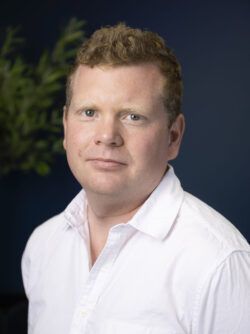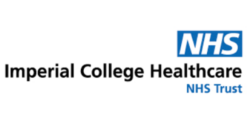Creating a new kind of hospital with a different conversation
Can we leave our deep-rooted views of medicine behind to build better hospitals? Rich Taunt discusses the work Kaleidoscope has done with patients, staff and citizens to redevelop St Mary’s Hospital in London.
The sun shone on our visit to the world’s most expensive hospital.
Being part of a conference nearby, those of us who wanted an early start were bussed up the road to the Karolinska Solna Hospital to see what an estimated 60 billion kronor (£5.27bn) buys you in medical real estate.
Wearing hard hats, we were shown where patients would arrive, where they would undergo operations, where they would recover, and where they would leave. No expense spared on modern technology and cutting edge design. Yet what remained with me is not the speed of change but the lack of it – if I’d visited a Swedish hospital a hundred, even 200 years earlier, I’d have had exactly the same tour.
I’m fascinated by just how deep-rooted our views about medicine are. In the maelstrom of whatever NHS crises of the day, these beliefs sit there, silently, largely unchallenged, but hugely influential.
A desire to give these articles of faith a poke led me to buy the oldest children’s doctors kit I could find to see if it differed from what my daughters play with today (it didn’t). It’s why I so enjoy being part of the Kaleidoscope team supporting the Rethinking Medicine movement, seeking to improve how medicine supports better health and healthcare. It’s why we ran the world’s largest health sci-fi prize to think about health in 2100, and whether the future holds promise of change.
Need for curiosity
The fact that these views change so slowly means we need to find new ways to incorporate a bit more challenge, a bit more curiosity, into our everyday work.
We’ve been doing that over the last three months in talking to patients, staff and citizens about the redevelopment of St Mary’s Hospital in north-west London. Change has been coming for a while. When St Mary’s most famous alumni discovered Penicillin (in the appropriately named Alexander Fleming Laboratory Museum) in 1928, some of the buildings were already 80 years old.
The new St Mary’s will likely see in the 22nd century. Working with colleagues at Imperial College Healthcare NHS Trust, and our partners the Nuffield Trust, we were all keen to avoid focusing the research on aspects of hospitals, and care itself, which will likely be unrecognisable in the decades to come. Three factors were key.
Unchanging values
First, we focused on what the Trust didn’t expect to change: its values. We explored topics such as what a kind hospital looks like, how spaces can be designed for collaboration, how buildings can give confidence that experts are on hand, and that this is an organisation which aspires to ever greater things.
Some conclusions were unsurprising: wayfinding was mentioned frequently. Hospitals are disorientating at the best of times, but especially when you’re ill or worried about someone you love. How have we ended up with our most confusing buildings being where we go when we ourselves are most confused? Some findings were less expected: a desire for shared spaces between community and hospital, a shift in thinking about a hospital as only somewhere you go when you’re ill. More space for gardens was exceptionally popular.
Meeting as equals
Second, we brought different groups together. Our workshops included a diverse mix of staff, patients and members of the community, all meeting as equals and able to listen to perspectives they may not have heard. In one discussion on kindness we registered shock from patients that staff didn’t have their own canteen, replied to with feelings of staff guilt that why they should have anything better while patients still got scans in car parks.
This interaction not only helped participants think in a different way, but also enabled those who wore multiple hats to feel they weren’t participating as an employee, or as a patient, but as a person. Some 60% of those who responded to our survey identified as having multiple relationships with the Trust.
Giving users the power
Third, we made clear what the process represented. Both the research framework and its findings were overseen by a user-led stakeholder steering group made up of staff and members of Imperial’s lay forum. The rationale: if this is about understanding our users, we want to give our users the power to tell us how best to do it.
Likewise with the focus on values as the core of the organisation and the desire to treat all users as equals: the process actively sought to show what the Trust, and the hospital, wanted to become. Of course the new Karolinska hospital is different to its 18th century equivalent, yet it is the story they wanted to tell about their building that had stayed the same. It doesn’t have to be that way.
The findings of our research can help build a hospital that does try to tell a different story. There are clear recommendations as to what staff and citizens alike would see as a kind building.
The challenge for the Trust now is both to incorporate what they have heard into blueprints and business cases, but also to keep talking and listening.
The process was not a panacea. There is much to be done to overcome the barriers to participate in research such as this, particularly with those who view such ‘exercises’ as just that, an exercise rather than anything real. But if we’re to have any chance of viewing both hospitals and medicine in terms of what they could be, rather than what they have been, we have to start with a different form of conversation.



Comments